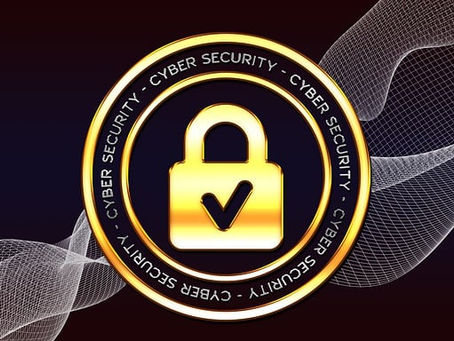Introduction to Cybersecurity
Share

image courtesy pixabay.com
In our rapidly advancing digital age, cybersecurity stands as a critical safeguard, protecting individuals, organizations, and nations from a multitude of threats. The exponential growth in technology and interconnected systems has given rise to a parallel increase in cyber threats, emphasizing the paramount importance of cybersecurity. This article serves as an authoritative guide to introduce and understand the fundamental aspects of cybersecurity, its significance, key threats, and potential solutions to mitigate risks.
Understanding Cybersecurity
Cybersecurity, often referred to as information technology security, involves the practice of defending computer systems, networks, and data from theft, damage, or unauthorized access. Its primary objective is to ensure the confidentiality, integrity, and availability of data. In simpler terms, cybersecurity seeks to protect the digital realm from malicious activities, encompassing a broad spectrum of mechanisms, processes, and practices.
The Core Principles of Cybersecurity
1. Confidentiality: Ensures that information is only accessible to those with the proper authorization and permissions.
2. Integrity: Guarantees the accuracy and reliability of data and systems by preventing unauthorized alterations.
3. Availability: Ensures that information and systems are available and accessible when needed without compromise.
4. Authentication: Verifies the identity of users and systems to grant appropriate access levels.
5. Authorization: Defines permissions and access rights based on roles and responsibilities.
6. Non-repudiation: Prevents individuals from denying their actions in a digital transaction, establishing accountability.
Cybersecurity Frameworks
Several frameworks guide the implementation and management of cybersecurity measures. Notable frameworks include the NIST Cybersecurity Framework, ISO/IEC 27001, CIS Controls, and the Cybersecurity Framework by the International Society of Automation (ISA). These frameworks offer structured approaches to assess risks, develop safeguards, and maintain effective cybersecurity practices.
The Significance of Cybersecurity
Cybersecurity holds immense significance in today’s world due to the escalating frequency and severity of cyber threats. The consequences of a successful cyber-attack can range from financial loss and reputational damage to compromising national security. Below are some key reasons highlighting the importance of cybersecurity:
A. Protection of Sensitive Data
In an era where personal and sensitive data are stored digitally, ensuring the security of this information is paramount. Cyber-attacks often target this data, aiming to misuse or exploit it for financial gain, identity theft, or other malicious activities. A robust cybersecurity system protects against unauthorized access and data breaches.
B. Safeguarding Privacy
Preserving individuals’ privacy is a fundamental human right. Cybersecurity measures help maintain privacy by limiting access to personal information and preventing invasive surveillance.
C. Maintaining Business Continuity
For organizations, disruptions in operations due to cyber-attacks can be devastating. Cybersecurity safeguards ensure business continuity by preventing downtime caused by attacks such as ransomware, Distributed Denial of Service (DDoS), or system compromises.
D. Upholding National Security
Cyber threats are not limited to individual or organizational levels; they pose significant risks to national security. State-sponsored cyber-attacks, cyber-terrorism, and hacking critical infrastructure can have far-reaching implications on a nation’s stability and safety.
Key Cybersecurity Threats
To effectively combat cyber threats, understanding the nature and types of these threats is essential. Cyber threats continue to evolve, becoming more sophisticated and targeted. Some prevalent cybersecurity threats include:
A. Malware
Malware, short for malicious software, includes entities such as viruses, worms, Trojans, ransomware, and spyware. These software programs are designed to infiltrate systems, steal data, or disrupt operations.
B. Phishing
Phishing attacks involve deceptive emails, messages, or websites that trick users into revealing personal information, such as passwords and credit card details.
C. Social Engineering
Social engineering is a deceptive tactic where malicious actors exploit human psychology to manipulate individuals into revealing sensitive information or performing actions that compromise security. It often involves impersonation, trust-building, and psychological manipulation to gain unauthorized access or obtain confidential data. Vigilance and education are crucial defenses against social engineering.
D. Denial of Service (DoS) Attacks
Denial of Service (DoS) attacks are malicious attempts to disrupt a targeted server, service, or network by overwhelming it with a flood of traffic. The objective is to render the target unavailable to its intended users, causing disruptions and often financial losses. DoS attacks flood the system’s bandwidth or resources, making it slow or completely unavailable. Distributed Denial of Service (DDoS) attacks, a variant, involve a network of compromised devices, amplifying the scale of the assault. Mitigating DoS attacks requires robust cybersecurity measures and proactive monitoring to swiftly identify and neutralize the attack sources.
E. Insider Threats
Insider threats come from individuals within an organization who misuse their access and privileges to compromise security, either intentionally or unintentionally.
Cybersecurity Solutions and Best Practices
Addressing cybersecurity threats requires a multifaceted approach involving technology, policies, and human awareness. Here are some cybersecurity solutions and best practices to mitigate risks effectively:
A. Employ Advanced Security Measures
Implement firewalls, antivirus software, intrusion detection systems, and encryption to protect against various cyber threats. Make it a priority to regularly update these tools to stay ahead of evolving threats.
B. Conduct Regular Security Audits and Risk Assessments
Regularly assess the organization’s security posture, identify vulnerabilities, and develop strategies to mitigate risks effectively.
C. Train and Educate Personnel
Education is a potent tool in combating cybersecurity threats. Regularly train employees on cybersecurity best practices, phishing awareness, and incident response to foster a security-conscious culture within the organization.
D. Establish an Incident Response Plan
Develop a comprehensive incident response plan outlining steps to be taken in the event of a cyber-attack. Timely and appropriate responses can minimize damage and recovery time.
E. Secure Data Backups
Regularly backup critical data and store it securely to ensure quick recovery in case of a ransomware attack or data breach.
A Final Note
Cybersecurity is no longer an option; it’s a necessity in our digital world. The escalating sophistication of cyber threats necessitates continuous improvement and adaptation of cybersecurity measures. Understanding the fundamentals of cybersecurity, its significance, key threats, and best practices empowers individuals and organizations to actively contribute to a safer digital environment. By embracing robust cybersecurity strategies, we can navigate the digital domain with confidence and security, ensuring a sustainable and thriving digital future.


